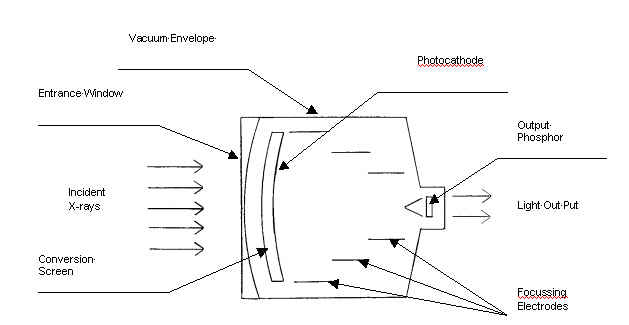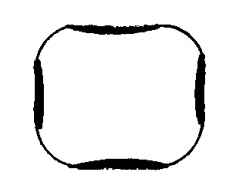Converter Device
In RTR, as in conventional radiography, X-rays passing through the part are used to produce an image. For the transmitted energy to be useful, it must be converted to an energy form that the system components can utilize to produce the image. Usually, radiation is converted to light energy (visible light), and this light is converted to an electronic signal (a video signal).
The image intensifier commonly used as a converter device, contains a fluorescent material such as cesium iodide. On the input screen, the visible light is much too dim to produce a usable image. There, photons are converted to electrons, accelerated, and reconverted to light on the output screen. Light amplification typically is in the range of 30/10,000 light amplification factors. This factor arises, in part, from two causes: (1) electron amplification as the electrons are accelerated by a high voltage, 25-30 kv between the cathode and anode, and (2) electron focusing on a small output screen approximately 10 times smaller than the input screen. See Figure 6 and 7 for an illustration and picture of typical image intensifier. Figure 8 shows a picture of output phosphor screen that is imaged by the CCD camera.





The advantage of using the image intensifier for RTR is that it has good light output. The disadvantage is that it introduces several image artifacts. One of these artifacts is called pin cushioning. Pin cushioning results from the fact that the distance for the point of focus at the center of the CRT is different from that at the top or bottom of the CRT due to its curved shape. (See figure 9.) The difference in distance results in an image that is slightly distorted at the edges as illustrated in figure 10.
Other image artifacts include non-uniform pixel response and phosphor blooming. Non-uniform pixel response is a condition where the gray level of the pixels at the edge differs from the gray level at the center of the image. Phosphor blooming is a condition where the x-rays striking the conversion screen cause the phosphor particle to glow so brightly that the light spreads from one pixel to adjacent pixels and causes interference with its light output, or blurring.